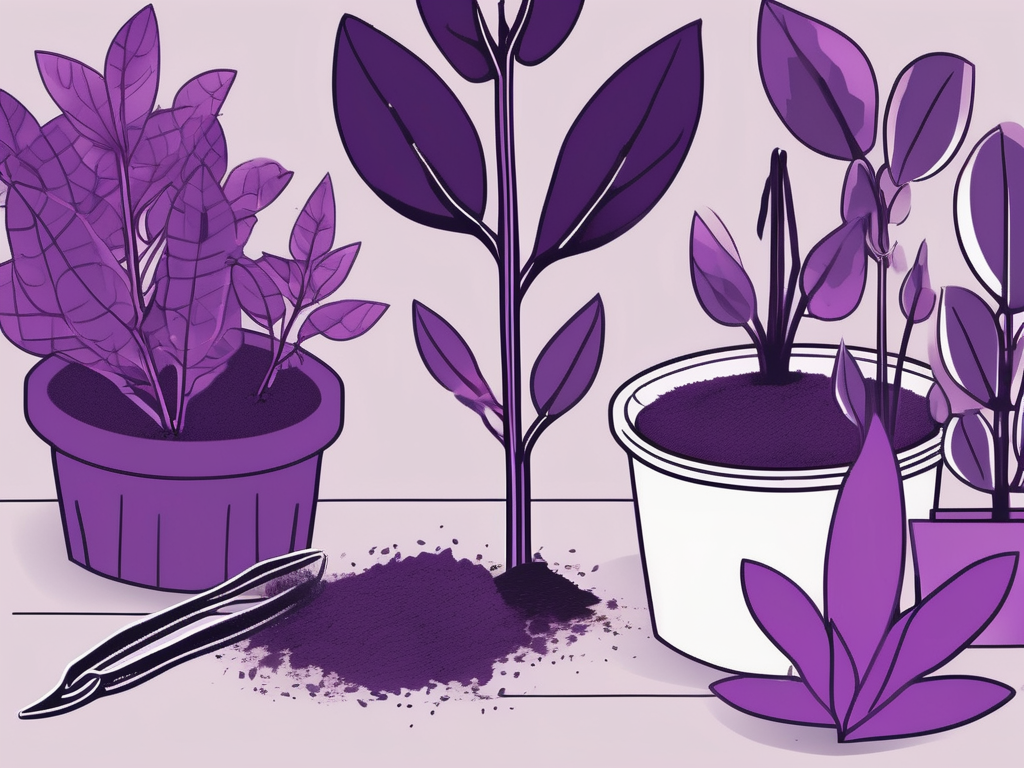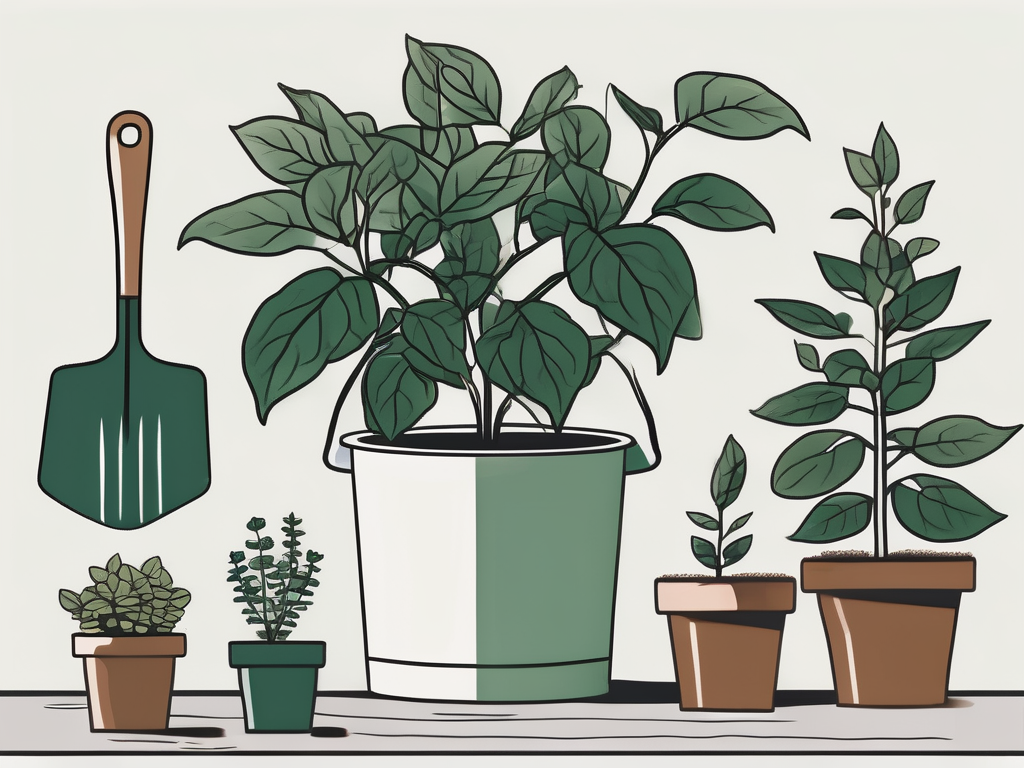
There's something uniquely charming about the Purple Passion Plant, with its velvet-textured leaves and vibrant purple hue. It's no wonder plant lovers are eager to propagate this beauty and share its splendor throughout their homes. Propagating plants can seem tricky at first, but once you get the hang of it, it becomes an incredibly satisfying endeavor.
This guide will walk you through the process of propagating the Purple Passion Plant from start to finish. We'll cover everything you need to know, from gathering your materials to nurturing your new plants. So whether you're a seasoned plant parent or just starting out, you'll find helpful tips and insights here.
Understanding the Purple Passion Plant
The Purple Passion Plant, scientifically known as Gynura aurantiaca, is a striking houseplant that draws attention with its fuzzy, purple-tinged leaves. It's a relatively low-maintenance plant, making it a popular choice for both beginners and experienced plant people alike. But before diving into propagation, it's essential to understand a bit about its background and care requirements.
Originating from Southeast Asia, the Purple Passion Plant thrives in warm, humid climates. It prefers bright, indirect light and well-draining soil. Too much direct sunlight can cause the leaves to lose their vibrant color, so finding the right balance is crucial. Regular watering is important, but be careful not to let the plant sit in waterlogged soil, as this can lead to root rot.
Understanding these basic needs will help you create an optimal environment for your plant, ensuring successful propagation. Plus, knowing the plant's background adds a bit of personality to the process, making it even more enjoyable to watch your new growth thrive.
Gathering Your Materials
Before you start propagating your Purple Passion Plant, you'll need to gather some essential materials. Having everything ready to go will make the process smoother and more enjoyable, allowing you to focus on the fun part—growing new plants!
- Healthy Parent Plant: Choose a mature, healthy Purple Passion Plant with vibrant foliage and no signs of disease or pests. This plant will provide the cuttings needed for propagation.
- Sharp Scissors or Pruning Shears: A clean, sharp tool is crucial for making precise cuts without damaging the plant.
- Small Pots or Containers: These will be used to hold your cuttings. Make sure they have drainage holes to prevent waterlogging.
- Potting Mix: A well-draining mix is essential for Purple Passion Plants. You can use a mix specifically for houseplants or create your own by combining potting soil with perlite or sand.
- Rooting Hormone (optional): This can help accelerate the rooting process, but it's not strictly necessary.
Once you've gathered your materials, you're ready to move on to the next step. Remember, preparation is half the battle—having everything in place will make the whole process much more enjoyable.
Choosing the Right Time for Propagation
Timing can play a significant role in the success of your propagation efforts. While you can technically propagate Purple Passion Plants at any time of the year, certain seasons offer better conditions that can boost your chances of success.
Spring and early summer are generally the best times to propagate, as the plant is in its active growth phase. During this period, the warmer temperatures and increased daylight encourage the plant to grow more vigorously, which means your cuttings will have a better chance of developing strong roots.
That said, if your plant is indoors and you're able to control the environment, you might be able to propagate successfully even during less ideal seasons. Just keep in mind that growth may be slower in the colder months.
By choosing the right time, you'll set the stage for a successful propagation experience. Timing isn't everything, but it can certainly tip the odds in your favor!
Making the Perfect Cutting
Now for the fun part—taking your cuttings. This step is crucial, as the quality of your cutting will directly affect the success of your propagation. Here’s how to do it right.
- Select a Healthy Stem: Look for a stem that is healthy and free from any signs of disease. Ideally, choose a stem that is about 4-6 inches long with several sets of leaves.
- Make a Clean Cut: Using your sharp scissors or pruning shears, make a clean cut just below a node (the point where leaves attach to the stem). A clean cut will minimize damage and encourage faster healing.
- Remove Lower Leaves: Strip off the leaves from the lower half of the cutting. This part of the stem will be submerged in water or soil, so you want to prevent any leaves from rotting.
And there you have it—your cutting is ready to be propagated. It might seem like a small step, but making a good cut can make all the difference.
Rooting in Water vs. Soil
Once you have your cutting, you need to decide whether to root it in water or soil. Both methods have their pros and cons, and the choice often depends on personal preference.
Rooting in Water
- Visibility: Water propagation lets you see the roots as they develop, which can be incredibly satisfying.
- Consistency: Water provides a constant source of moisture, reducing the risk of the cutting drying out.
- Transition: Once roots are established, you'll need to transition the cutting to soil carefully, which can sometimes be a tricky process.
Rooting in Soil
- Familiar Environment: Starting in soil means the cutting will be in its eventual growing medium from the start, which can reduce transplant shock.
- Less Maintenance: Soil holds moisture, meaning you won't need to top it up as frequently as you would with water propagation.
- Invisible Progress: You won't be able to see the roots developing, which can be a bit nerve-wracking if you're eager for progress.
Ultimately, both methods can be effective, so choose the one that aligns with your comfort level and curiosity. If you love watching every stage, go with water. If you prefer a more hands-off approach, soil might be your best bet.
Planting the Cuttings
Once your cuttings have developed roots, it's time to plant them in soil. This step is crucial for transitioning your cutting into a thriving plant.
- Prepare the Pot: Fill your small pot or container with a well-draining potting mix. If you've rooted your cutting in water, make sure the soil is slightly damp before planting.
- Plant the Cutting: Make a small hole in the center of the soil and gently place the cutting into it, ensuring the roots are well-covered. Press the soil lightly around the base to secure it.
- Water the Cutting: Give the newly planted cutting a good drink of water. Be cautious not to overwater, as the soil should be moist but not soggy.
And there you have it—your cutting is now on its way to becoming a full-fledged plant. This step might seem like the end, but really, it's just the beginning of your plant's new life.
Nurturing Your New Plants
With your cuttings planted, the next step is nurturing them to ensure they thrive. This involves providing the right conditions and keeping a watchful eye on their progress.
- Light: Place your new plants in a spot with bright, indirect light. Avoid direct sunlight, as it can scorch the delicate leaves.
- Watering: Keep the soil consistently moist but not waterlogged. During the initial weeks, your cuttings will need a bit more attention to ensure they don't dry out.
- Humidity: The Purple Passion Plant enjoys high humidity. You can increase humidity by misting the plant or placing a small humidifier nearby.
- Fertilizing: Once your plant is established, you can start feeding it with a balanced liquid fertilizer every few weeks during its active growing season.
Monitoring these factors will help your new plants flourish. Remember, patience is key—growth may be slow at first, but with time and care, your plants will reward you with vibrant foliage and a touch of purple magic.
Dealing with Common Problems
Even with the best care, you might encounter some issues along the way. Don’t worry—these common problems are usually easy to address with a few tweaks to your care routine.
Yellowing Leaves
Yellow leaves can be a sign of overwatering. Check the soil's moisture level and adjust your watering schedule accordingly. Ensuring proper drainage will also help prevent root rot.
Wilting
Wilting can occur due to underwatering or low humidity. Make sure your plant is receiving enough water, and consider increasing humidity if the air is particularly dry.
Pests
The Purple Passion Plant can occasionally attract pests like spider mites or aphids. If you notice any unwelcome visitors, gently wipe the leaves with a damp cloth or use an insecticidal soap to keep them at bay.
Addressing these issues promptly will keep your plant healthy and happy, allowing you to enjoy its beauty without any hiccups.
Creating a Plant-Filled Home
With your new Purple Passion Plants thriving, you might be inspired to incorporate them into your home decor. Plants have a unique way of transforming spaces, adding life and color to any room.
- Living Room: Use your Purple Passion Plant as a focal point in your living room. Its vibrant color can complement neutral tones, creating a striking contrast.
- Bedroom: Place a plant on your bedside table for a touch of serenity. Its soft texture and color can create a calming atmosphere.
- Bathroom: If your bathroom has enough light, a Purple Passion Plant can thrive here, adding a spa-like feel to the space.
Think about the ambiance you want to create in each room and choose plant placements that enhance that mood. The Purple Passion Plant’s versatility makes it a fantastic addition to any decor style.
Final Thoughts
Propagating the Purple Passion Plant is a rewarding journey that brings both beauty and satisfaction into your home. By understanding its needs and following these steps, you'll find success in growing new plants that can be enjoyed for years to come.
At Cafe Planta, we're passionate about helping you care for your plants with ease. Whether you're looking for unique houseplants or need advice, we're here to support your plant journey. Feel free to reach out via email or connect with us on Instagram. Let's grow together!












